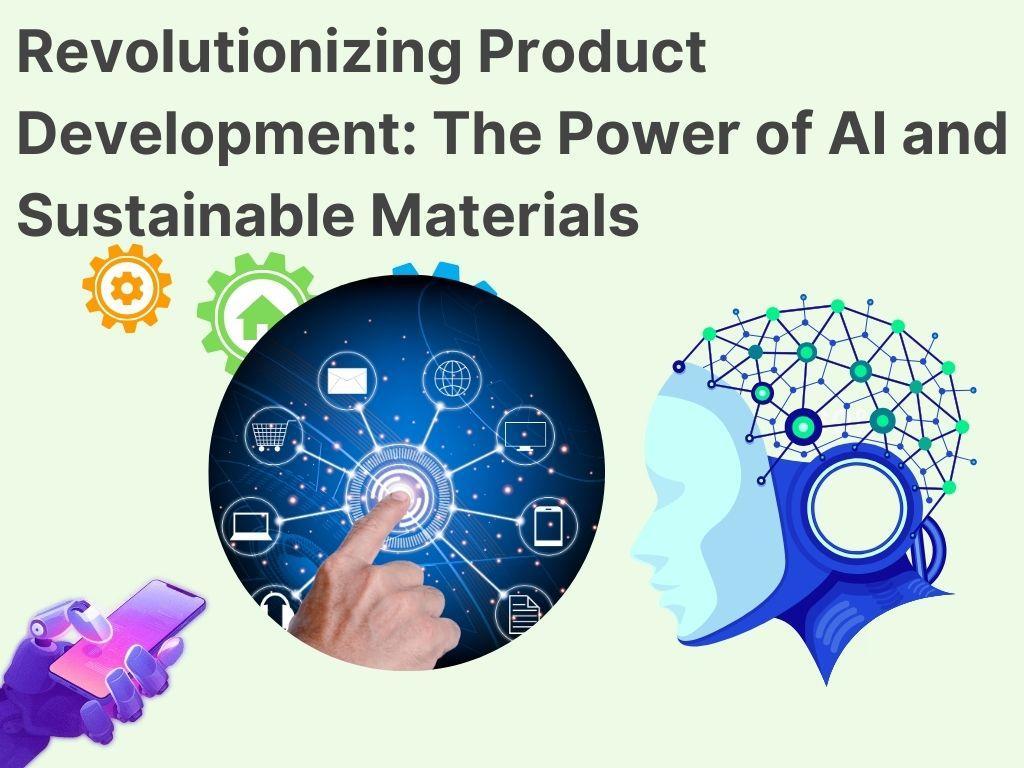Share Share Share Share Email In a world where consumer demands and environmental concerns are constantly evolving, product development is undergoing a fundamental transformation. Srikanth Raavi Venkata , an expert in the field, explores the integration of Artificial Intelligence (AI) and innovative materials as a revolutionary approach to designing and manufacturing products. His insights highlight how these advancements are shaping the future of sustainable and personalized product development.
AI-Driven Design: A Game Changer Traditional product development relied heavily on consumer surveys, focus groups, and market analysis, which often led to generalized results and slow innovation cycles. AI, however, has introduced a new era of efficiency and precision. Advanced algorithms analyze vast amounts of data, including social media trends, customer reviews, and behavioral patterns, to predict consumer preferences with remarkable accuracy.

Eye-Tracking Technology: Understanding Consumer Behavior One of the most groundbreaking applications of AI in product development is eye-tracking technology. By measuring eye movements and cognitive responses, this technology provides valuable insights into how consumers visually interact with products. Companies can optimize packaging, interface layouts, and product aesthetics based on real-time consumer engagement.
This innovation ensures that products are not only functional but also visually appealing, increasing their market success. Sustainable Materials: The Future of Eco-Friendly Products The environmental impact of traditional materials, particularly plastics, has driven the need for sustainable alternatives. Conventional plastics contribute significantly to pollution, with millions of tons ending up in oceans every year.
In response, researchers and developers are focusing on biodegradable plastics, cork, and other eco-friendly materials to reduce environmental harm while maintaining durability and functionality. Biodegradable Plastics: A Step Towards Sustainability Biodegradable plastics, derived from renewable resources such as plant materials, decompose naturally under specific conditions. Despite their current limited market share, these plastics are gaining traction as businesses and consumers shift towards sustainability.
From disposable cutlery made of avocado seeds to kitchen utensils crafted from bamboo fibers, the applications of biodegradable plastics are expanding rapidly, offering greener alternatives to traditional materials. Cork: A Versatile and Antibacterial Solution Cork is emerging as a sustainable material with unique antibacterial properties. Its versatility allows it to be incorporated into home appliances, handles, cooktop knobs, and even acoustic insulation in audio equipment.
Unlike synthetic materials, cork is biodegradable and requires minimal processing, making it an environmentally responsible choice for modern product design. AI and Sustainable Materials: A Synergistic Approach The integration of AI with sustainable materials presents a powerful synergy in product development. AI-driven design processes optimize the use of eco-friendly materials by analyzing their properties, market demand, and consumer preferences.
This approach accelerates the adoption of sustainable materials while ensuring their effective application in various industries. With rapid prototyping capabilities, AI enables designers to test and refine eco-friendly alternatives, driving faster and more efficient innovation. Overcoming Challenges in Adoption Despite the promising potential of AI and sustainable materials, challenges remain.
High initial costs, technical limitations, and regulatory hurdles can slow the adoption process. However, advancements in AI-driven efficiency and scalable production techniques are expected to make these solutions more accessible. Integration with existing infrastructure requires strategic planning.
The Road Ahead: What the Future Holds Looking ahead, AI is expected to become even more sophisticated, predicting future consumer needs and generating novel design concepts. The use of virtual and augmented reality in product development will enable immersive experiences, allowing consumers to interact with products before they are manufactured. Similarly, the development of new biodegradable materials—such as those derived from agricultural waste—will continue to drive sustainability in product design.
As these innovations gain momentum, companies that prioritize AI-driven personalization and environmental responsibility will shape the future of consumer goods. In conclusion,The fusion of AI and innovative materials is revolutionizing the way products are designed and manufactured. As AI-driven insights enhance consumer understanding and sustainable materials reduce environmental impact, the potential for transformation is immense.
While challenges exist, ongoing advancements and industry collaboration will pave the way for a future where technology and sustainability coexist harmoniously. Srikanth Raavi Venkata’s exploration of these trends underscores the significance of this shift, highlighting how it is set to redefine product development for generations to come. Related Items: AI , Srikanth Raavi Venkata Share Share Share Share Email Recommended for you The Future of Enterprise Data: AI-Driven Queryless Analytics AI-Powered Business Automation: Transforming Enterprise Efficiency Transforming Credit Risk Assessment: The AI Revolution in Banking Comments.
Technology

Revolutionizing Product Development: The Power of AI and Sustainable Materials

In a world where consumer demands and environmental concerns are constantly evolving, product development is undergoing a fundamental transformation. Srikanth Raavi Venkata, an expert in the field, explores the integration of Artificial Intelligence (AI) and innovative materials as a revolutionary approach to designing and manufacturing products. His insights highlight how these advancements are shaping the [...]The post Revolutionizing Product Development: The Power of AI and Sustainable Materials appeared first on TechBullion.















